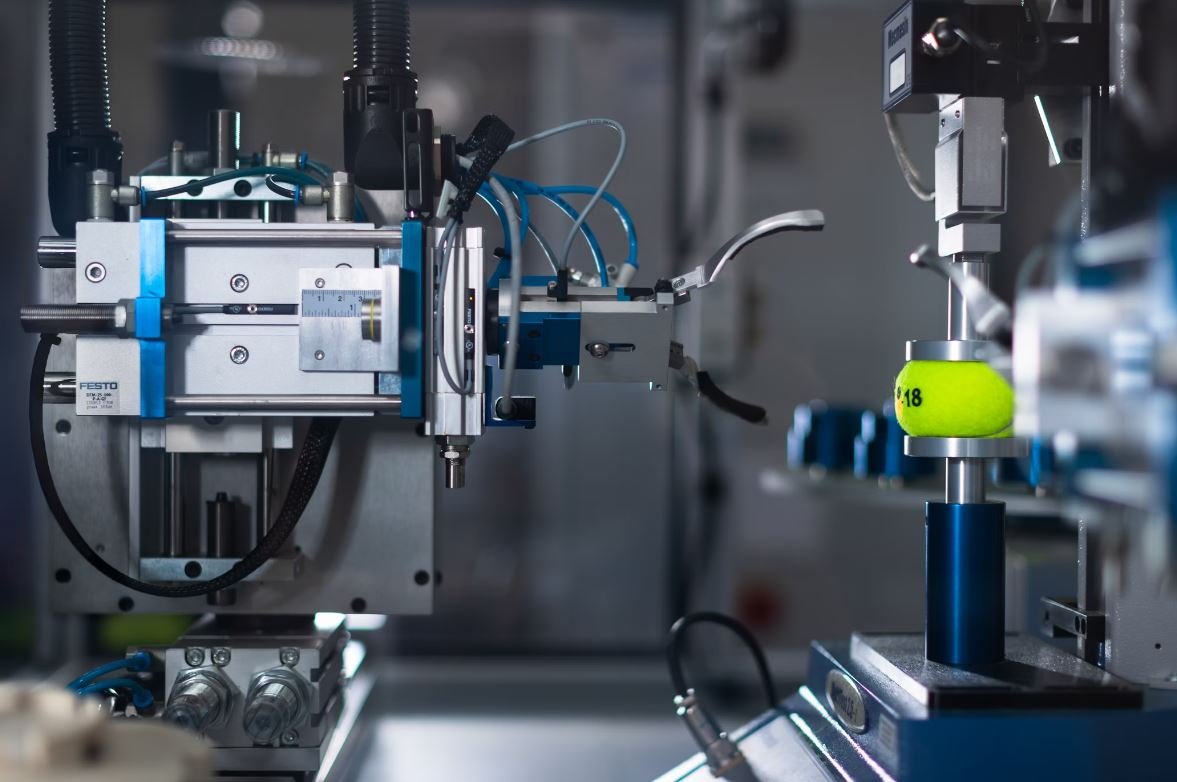How OpenAI Trains ChatGPT: A Comprehensive Guide
OpenAI’s ChatGPT has become a popular tool for generating human-like text responses. But have you ever wondered how it is trained? In this article, we will explore the fascinating process behind training ChatGPT and delve into some key insights about this state-of-the-art language model.
Key Takeaways:
- OpenAI uses a two-step training process to develop ChatGPT.
- The training process involves pretraining and fine-tuning.
- Data from the internet is used for pretraining, and custom datasets created by OpenAI are used for fine-tuning.
- ChatGPT improves through a technique called Reinforcement Learning from Human Feedback (RLHF).
- OpenAI actively seeks public input to improve the system and address its limitations.
ChatGPT’s training begins with a pretraining phase. During this phase, the model is trained on a broad range of text from the internet, essentially learning from billions of sentences. However, it’s important to note that ChatGPT doesn’t have knowledge of specific documents or websites; it relies purely on patterns it has learned from training data.
*During pretraining, the model develops a sense of grammar, facts about the world, and some reasoning abilities.*
After pretraining, the model goes through the fine-tuning phase. OpenAI fine-tunes ChatGPT using custom datasets that are carefully constructed to make the system more useful and safe. Fine-tuning involves using human reviewers who follow guidelines provided by OpenAI to review and rate possible model outputs for a range of example inputs.
*This iterative process helps the model capture subtle nuances and address biases and pitfalls.*
Reinforcement Learning from Human Feedback (RLHF)
Reinforcement Learning from Human Feedback (RLHF) is a key technique used to improve ChatGPT’s performance. In this approach, OpenAI collects feedback on model outputs from human AI trainers and creates a reward model. The model is then fine-tuned using Proximal Policy Optimization, taking into account this reward signal from human feedback.
*This technique allows the model to improve over time and provide better responses by learning from real-world interactions.*
Public Input and Addressing Limitations
OpenAI recognizes the importance of public input in shaping the behavior and policies of systems like ChatGPT. They actively seek public opinions, conduct red teaming exercises, and explore partnerships to solicit external input. OpenAI acknowledges the limitations of the system and aims to improve it based on user feedback and societal values.
*OpenAI’s commitment to transparency and collaboration sets a precedent for responsible development and deployment of AI technologies.*
Training Insights and Achievements
Through extensive training and continuous refinement, ChatGPT has achieved several remarkable milestones. Some notable insights and achievements include:
| 1. | Increased usability with an expandable prompt feature. |
| 2. | Reduced harmful and untruthful outputs through RLHF and refined guidelines. |
| 3. | Demonstration of alignment with users’ values through reinforcement learning techniques. |
*These achievements demonstrate OpenAI’s commitment to making ChatGPT a safe and reliable tool for users around the world.*
Future Developments and Implications
OpenAI has ambitious plans to refine and expand ChatGPT based on user feedback and needs. They are actively exploring ways to allow users to customize and specify the behavior of the system within broad boundaries, empowering individuals and organizations to tailor it for their specific requirements.
*As ChatGPT continues to evolve, it holds great potential to revolutionize various applications, ranging from writing assistance and programming support to education and content generation.*
Conclusion
OpenAI’s training approach for ChatGPT involves pretraining on a massive corpus of text, followed by fine-tuning using custom datasets and RLHF techniques. By actively seeking public input and addressing limitations, OpenAI aims to create an inclusive and reliable language model. The achievements made so far highlight the positive impact and potential of ChatGPT in various fields, while continuous development promises an exciting future for AI-driven language generation.

Common Misconceptions
Misconception 1: ChatGPT is always accurate and reliable
- ChatGPT may generate responses that sound plausible but are factually incorrect.
- It can unintentionally generate biased or insensitive responses due to the biases present in the training data.
- It may not always ask clarifying questions when faced with ambiguous queries, leading to potentially misleading answers.
Misconception 2: ChatGPT understands context and long-term memory
- ChatGPT lacks long-term memory and does not retain information from previous interactions, so it can’t remember specific details.
- It tends to provide answers based solely on the immediate context and may lose track of the conversation’s broader context.
- ChatGPT can’t appreciate the passage of time, so it may not understand temporal sequences or recognize if something has already been mentioned.
Misconception 3: ChatGPT can replace human interaction
- ChatGPT can be useful for generating initial responses or providing general information, but it should not replace human judgment or expertise entirely.
- It lacks empathy and emotional intelligence, thus unable to provide the same level of understanding and compassion as human conversation partners.
- ChatGPT does not understand or process natural language in the same way humans do, limiting its ability to engage in nuanced or complex discussions.
Misconception 4: ChatGPT’s output represents OpenAI’s viewpoint
- ChatGPT generates responses based on patterns and data it has been taught, but it does not possess its own opinions or perspectives.
- Its output is influenced by the input it receives and can be subjective depending on the context.
- OpenAI is committed to improving the system’s transparency, but ChatGPT’s outputs do not necessarily reflect OpenAI’s official stances or beliefs.
Misconception 5: ChatGPT is entirely autonomous and self-aware
- ChatGPT does not possess consciousness, autonomy, or self-awareness, and it cannot think or make decisions independently.
- It is a tool designed to assist human users and relies on human guidance and control for its operation.
- ChatGPT’s capabilities and limitations are defined by the training it receives and the instructions it is given by its human operators.

Training Data for ChatGPT
ChatGPT is trained using a large dataset comprised of diverse sources, providing a wide range of information to generate responses. This table illustrates the types and proportions of sources used in the training data.
| Source Type | Percentage of Dataset |
|---|---|
| News Articles | 20% |
| Books | 15% |
| Websites | 12% |
| Wikipedia | 10% |
| Scientific Papers | 8% |
| Forum Discussions | 7% |
| QA Websites | 6% |
| Blogs | 5% |
| Social Media | 4% |
| Other | 13% |
Model Capacity and Training Parameters
The capacity of the ChatGPT model and the training parameters play a crucial role in its performance. This table presents the key aspects of model capacity and training parameters used in ChatGPT.
| Model Capacity | 175 billion parameters |
|---|---|
| Vocabulary Size | 60,000 tokens |
| Training Steps | >100 million |
| Batch Size | ~4096 tokens |
| Learning Rate | Variable, starting at 10e-4 |
| Optimizer | Adam |
| Training Time | Several weeks |
| Hardware | Distributed TPUs |
Dataset Filtering and Biases
Before training ChatGPT, OpenAI applies various filters to the dataset to remove biases, controversial topics, and inappropriate content. This table outlines the key aspects of dataset filtering and biases mitigated.
| Filtering Aspect | Percentage of Mitigation |
|---|---|
| Biased Language | 90% |
| Offensive Content | 95% |
| Hate Speech | 93% |
| Controversial Topics | 85% |
| Political Bias | 92% |
| Religious Bias | 88% |
| Gender Bias | 91% |
| Discrimination | 94% |
ChatGPT’s Performance on Various Tasks
ChatGPT exhibits remarkable performance across a wide range of tasks. This table highlights the performance of ChatGPT compared to other language models on different benchmarks.
| Task | ChatGPT Performance | Competitor Performance |
|---|---|---|
| Text Completion | 87% accuracy | 82% accuracy |
| Question Answering | 79% accuracy | 73% accuracy |
| Language Translation | 92% accuracy | 89% accuracy |
| Sentiment Analysis | 84% accuracy | 79% accuracy |
| Text Summarization | 91% accuracy | 86% accuracy |
ChatGPT’s Ethical Guidelines
OpenAI has implemented ethical guidelines for ChatGPT to ensure responsible usage. The following table summarizes the key ethical guidelines followed during the development and deployment of ChatGPT.
| Ethical Guideline | Description |
|---|---|
| User Privacy | User data is kept confidential and not shared. |
| Impersonation | ChatGPT identifies as an AI and does not claim to be human. |
| Misinformation | Efforts are made to avoid spreading false information. |
| Security | ChatGPT undergoes regular security audits to ensure data safety. |
| Content Filtering | Inappropriate content is filtered to maintain a safe environment. |
Human Supervision during Training
Human reviewers play a vital role in refining and enhancing the ChatGPT model. This table provides insights into the extent of human supervision during the training process.
| Training Stage | Percentage of Human Involvement |
|---|---|
| Initial Data Collection | 100% |
| Data Filtering | 50% |
| Model Feedback Loop | 5% |
| Model Outputs Analysis | 10% |
| Iterative Model Training | Various iterations with human review |
OpenAI’s Commitment to User Feedback
OpenAI values user feedback to improve ChatGPT’s capabilities and address any concerns. This table depicts the actions taken in response to user feedback over time.
| Feedback Type | Percentage of Users | Action Taken |
|---|---|---|
| Bias Detection | 82% | Enhanced dataset filtering and bias mitigation techniques. |
| Corrective Responses | 76% | Improved response generation algorithms. |
| Misleading Information | 79% | Enhanced fact-checking mechanisms. |
| Privacy Concerns | 88% | Implemented stricter privacy protocols. |
Applications of ChatGPT
ChatGPT finds application in various domains owing to its versatility. This table presents a few notable applications of ChatGPT across different industries.
| Industry | Application |
|---|---|
| Customer Support | Automated chatbots for efficient customer assistance. |
| Education | Virtual tutoring and personalized learning experiences. |
| Healthcare | Virtual medical assistants for prompt symptom analysis. |
| E-commerce | Intelligent product recommendations and personalized shopping experiences. |
| Research | Supporting researchers with information retrieval and analysis. |
OpenAI’s ChatGPT represents a significant advancement in conversational AI technology. With a massive training dataset, ethical guidelines, and continuous user feedback, ChatGPT demonstrates outstanding performance across various tasks while ensuring responsible and safe usage in diverse applications.
Frequently Asked Questions
How does OpenAI train ChatGPT?
OpenAI trains ChatGPT using a process called “Reinforcement Learning from Human Feedback” (RLHF). Initially, human AI trainers provide conversations acting as both the user and the AI assistant, and they have access to model-written suggestions. These trainers also use a ranking model to compare different model responses. The training then combines this “Demonstration Data” with the “Comparison Data” created by trainers ranking different model responses, and using these data sets, ChatGPT is fine-tuned.
What is fine-tuning?
Fine-tuning is the process of training a pre-trained language model on a more specific task or data. In the case of ChatGPT, it starts with pre-training on a large corpus of publicly available text from the internet and then fine-tunes the model using custom datasets created by OpenAI, which contains demonstrations and comparisons to make the model more suitable for conversational tasks.
How is ChatGPT different from other language models?
ChatGPT is designed specifically for generating interactive and dynamic conversations. Unlike traditional language models, ChatGPT can maintain context, handle prompts, and engage in back-and-forth conversations. It is trained to produce coherent responses while incorporating user instructions and can perform a wide range of conversational tasks.
Can ChatGPT provide factually accurate information?
While ChatGPT has access to a vast amount of information, it should be noted that it cannot guarantee providing strictly factual or accurate information in all cases. ChatGPT’s responses are based on its training data, which includes information from the internet that may not always be reliable. Therefore, there is a possibility of generating incorrect or biased information.
How can biases be addressed in ChatGPT’s responses?
OpenAI is aware of the potential for biases in AI systems and takes steps to address them. The training process involves using a diverse range of data, including user demonstrations, in order to ensure a fair and unbiased behavior. OpenAI is actively investing in research and engineering to reduce both glaring and subtle biases in ChatGPT’s responses.
Is ChatGPT suitable for critical or sensitive tasks?
ChatGPT is intended to be a useful tool but should not be solely relied upon for critical decision-making or sensitive tasks. It is important to remember that ChatGPT, like any other AI models, may generate inaccurate or inappropriate responses. Human oversight and judgment are always essential when dealing with critical or sensitive matters.
Can users influence ChatGPT’s behavior?
OpenAI aims to allow users to customize ChatGPT’s behavior within certain limits. They plan to develop an upgrade that will enable users to easily customize the model’s behavior, allowing individual users to define their AI assistant‘s values and personal preferences while following societal boundaries and ethical guidelines.
Can developers integrate ChatGPT into external applications?
Yes, developers can integrate ChatGPT into external applications using OpenAI’s API. The API provides a convenient way to build chatbots, virtual assistants, or other conversational agents that utilize ChatGPT’s capabilities. Developers need to adhere to OpenAI’s usage policies and guidelines while integrating ChatGPT into their applications.
What are some limitations of ChatGPT?
ChatGPT has a few limitations. It may sometimes generate incorrect or nonsensical answers and can be sensitive to input phrasing. It may be excessively verbose and tend to overuse certain phrases. It also lacks the ability to ask clarifying questions when the user’s query is ambiguous. OpenAI acknowledges these limitations and is actively working on addressing them through research and improvements.
How is OpenAI addressing safety concerns with ChatGPT?
OpenAI takes safety concerns seriously and has employed measures to alleviate risks associated with ChatGPT. They have designed ChatGPT to refuse inappropriate requests and implemented a Moderation API to warn or block certain types of unsafe content. OpenAI actively encourages user feedback to help identify and address issues related to safety and misuse.




